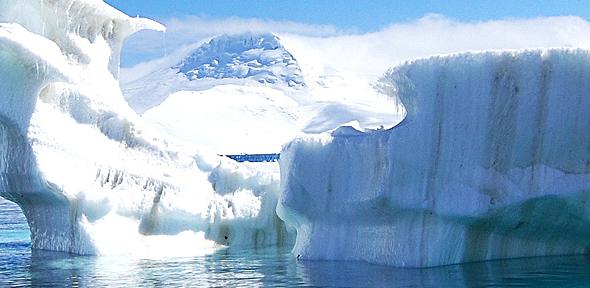
Sited within a department of the University of Cambridge, the Scott Polar Research Institute Library is a resource of national and international importance consulted by governments, industry, scientists and scholars.
We found out from Librarian, Martin French, what it’s like to work there and about his Open Cambridge talk, ‘Stranger than fiction’, on Friday 11 September. There will also be an exhibition throughout the same day.
OC: So what’s it like working at the Scott Polar Research Institute?
MF: I work in the Library at the Scott Polar Research Institute (SPRI) and I really enjoy my job because it’s incredibly varied. Not only is SPRI home to academics and postgraduate students studying the Polar Regions and related topics, it also houses a lot of information in the Library, Archive, Picture Library and Museum. No day in the office is quite the same! One day, I’ll be helping a user with their research for a historical account of an expedition using our Special Collection materials, another day I’ll be looking up recent journal articles for a paper on the glaciology of the Antarctic.
My favourite aspect of working at SPRI is the fact I get to work with the special treasures that we house such as the objects in the Museum and the manuscripts in the Archive. And my favourite items are those we have in our Library collection, such as the fiction and the musical works.
OC: What do you enjoy most about your job?
MF: Helping users with their information needs. This either happens when they come to visit us in the Library or via email and telephone; as well as our communities in Cambridge, we also serve the needs of the Polar communities around the world.
OC: Which best-loved and well-known fictional works relate to the Polar Regions?
MF: Famous written works with a connection to the Poles include H.P. Lovecraft’s At the Mountains of Madness and Edgar Allen Poe’s The Narrative of Arthur Gordon Pym. The Poles also feature in film: the horror film The Thing is set in Antarctica and is based on a novella from 1938 entitled Who goes there? by J.W. Campbell Junior. The exhibition for Open Cambridge will also look at other fictional works from other genres: romance, horror, graphic novels – there should be something for everyone!
OC: What kind of educational material is created?
MF: The Open Cambridge exhibition will mainly be focusing on fiction and children’s educational materials. This can range from picture books about polar plants and animals to translations and retellings of the folklore and stories told by the people who live in the Polar Regions. Studying the Polar Regions covers a variety of subject disciplines: geography, physics, chemistry, biology, history… so there is just as much a variety of educational material available to support education at all levels.
OC: To date, which has been your favourite exhibition / event and why?
MF: The Polar Museum regularly holds events and new exhibitions so there is always something interesting to see. My favourite Library event however was hosting the Polar Libraries Colloquy jointly with the British Antarctic Survey in 2014. We had visiting representatives from all over the world and held sessions on a variety of subjects: Polar Heritage and their work in restoring the huts in Antarctica, film restoration projects and refurbishment of other institutions libraries. It was a great experience and showed how SPRI Library’s reach extended beyond Cambridge and the UK.
OC: What can visitors expect to see at the Scott Polar Research Institute Library during Open Cambridge this year?
MF: As well as the Open Cambridge exhibition, visitors will be able to browse the Library and its collections and see the wide variety of materials that we have on offer. Furthermore, they can also visit the Polar Museum and have a look at our exhibits on polar exploration, indigenous peoples and polar science.
Image credit: Antartica 12, Guille Avalos via flickr

